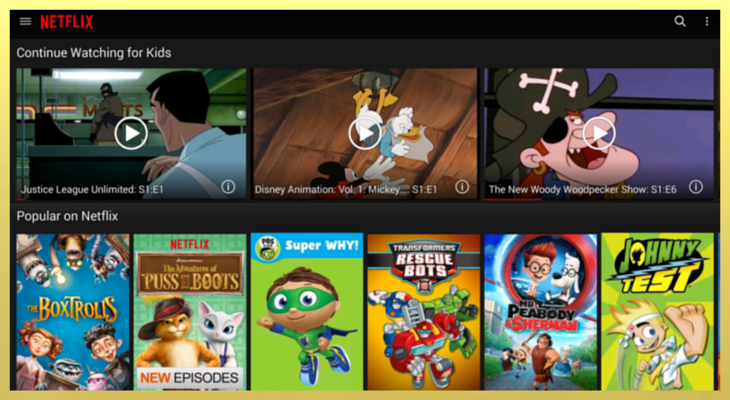You Have The Right: Make Sure That Your Well-being Is A Priority At Work
Making Well-being a Priority at Work
When it comes to the workplace, your well-being should be a top priority. It’s not just about avoiding physical injuries or dealing with a possible Uber car accident lawyer scenario; maintaining a healthy and supportive environment is vital. It’s high time you understood your rights and took a proactive approach to ensure your well-being at work.
The Importance of Understanding Your Rights
Workplace injuries are more common than you might think. It’s not always about the behavior within your place of work; sometimes, it’s the physical surroundings or the tasks you’re expected to carry out that can pose a problem. If you wish to avoid unnecessary visits to personal injury attorneys, it’s essential to be aware of the unsafe areas in your workplace. An accident not only puts you out of work and pocket for a while but it can also be detrimental to your employers. Hence, it’s in everyone’s best interest to meet and even exceed health and safety standards.
Before any issues arise, ensure that your employer has the necessary procedures in place, whether it’s handling an incident during working hours or providing healthcare and counseling after an event. This will give you peace of mind, knowing that you’ll be well taken care of in various circumstances.
Creating a Supportive Environment
Your well-being goes beyond physical safety. If your feelings and wellbeing are being ignored, or even harmed, it can be even more toxic to your health than an unsafe workplace. It’s crucial to have a senior member of staff to talk to regularly so you can voice your needs for more help and support.
Your employer might pay your wages, but they also need to ensure that you can grow and develop with the business. The only way to nourish your job and career is to provide the means for you to do your role and remain happy for the majority of the time.
Dealing with Workplace Bullying and Uncooperative Colleagues
If you feel there’s workplace bullying directed at you or you’re dealing with unhelpful colleagues, these are also things you shouldn’t have to deal with. A comfortable and secure work environment is essential for you to continue doing a great job and reaping the rewards at month’s end. Utilize meetings and catch-ups to share your thoughts, and ensure that improvements are made. If things don’t improve, don’t hesitate to contact those who can help you get what’s fair, while always keeping an eye out for new job opportunities to make the most of your skills.
FAQs
Why is well-being a priority at work?
Well-being at work is a priority because it impacts both your physical and mental health, which in turn affects productivity and job satisfaction.
What can I do if my well-being is not being prioritized at work?
If you feel your well-being is not being prioritized at work, communicate your concerns to your supervisor or HR. If necessary, seek legal help or look for a job where your well-being will be valued.
How can a supportive environment contribute to my well-being at work?
A supportive work environment contributes to your well-being by reducing stress, fostering positive relationships, and promoting a sense of belonging and accomplishment.
In conclusion, making well-being a priority at work is essential for both employees and employers. It not only ensures a safe and healthy work environment but also leads to increased productivity and job satisfaction.
| Rights in the Workplace | Description |
|————————|—————-|
| Safe Work Environment | Employers are required to provide a safe and healthy workplace. This includes ensuring proper safety measures are in place to prevent accidents and injuries, and providing the necessary protective equipment. |
| Workers’ Compensation | If you get injured at work, you have the right to workers’ compensation benefits. This includes payment for medical care and compensation for lost wages due to time off work. |
| Supportive Work Environment | Employers should foster a supportive environment that values employee wellbeing. This includes having measures in place to prevent workplace bullying and harassment, and addressing any issues promptly. |
| Fair Treatment | All employees have the right to be treated fairly and without discrimination. This includes being paid fairly for your work, receiving equal opportunities, and being free from any form of discrimination based on race, gender, religion, age, disability, or any other protected characteristic. |
| Right to Speak Up | Employees have the right to raise concerns about unsafe working conditions, unfair treatment, or any other issues without fear of retaliation. This includes the right to report any issues to the appropriate authorities or seek legal counsel if necessary. |
| Right to Privacy | Employees have a right to privacy in the workplace. This includes the right to keep personal matters private, and the right to privacy in personal belongings, personal mail, and personal phone calls, unless otherwise stated in company policy. |
| Right to Organize and Bargain Collectively | Employees have the right to form, join, or assist labor organizations, to bargain collectively through representatives of their own choosing, and to engage in other concerted activities for the purpose of collective bargaining or other mutual aid or protection. |
| Right to a Healthy Work-Life Balance | Employers should respect employees’ rights to a healthy work-life balance. This includes recognizing the need for time off for personal matters, and ensuring that work demands do not excessively interfere with personal life. |
| Right to Training and Development | Employees have the right to access training and development opportunities to enhance their skills and career prospects. This includes the provision of on-the-job training, professional development courses, and other learning opportunities. |
| Right to Fair Dismissal | Employees have the right to fair dismissal procedures, including the right to be informed of the reasons for dismissal, the right to respond to allegations, and the right to seek legal counsel if necessary. |

Work-Life Balance and Well-being
Work-life balance is a crucial aspect of well-being at work. It refers to the ability to evenly distribute time and energy between work and other important aspects of life such as family, hobbies, and personal care. A healthy work-life balance allows you to excel in your job without sacrificing personal time or well-being.
If you’re consistently working long hours, skipping breaks, or bringing work home, it might be time to reassess your work-life balance. This imbalance can lead to increased stress and burnout, which can negatively impact your productivity, job satisfaction, and overall well-being.
Employers should foster a culture that values work-life balance. This can be achieved by setting reasonable expectations, encouraging regular breaks, and offering flexible work arrangements. Employees, on the other hand, can maintain a healthy work-life balance by setting boundaries, prioritizing tasks, and taking time off when needed.
Importance of Mental Health in the Workplace
Mental health, often overlooked, is a significant part of workplace well-being. According to the World Health Organization, work-related stress is the leading workplace health problem and a major occupational health risk, affecting not only the health of employees but also the productivity of companies.
Employers can promote mental health by creating a supportive working environment, providing resources for mental health, and making efforts to eliminate stigma associated with mental health issues. Employees should feel comfortable discussing mental health concerns without fear of retaliation or judgment.
As an employee, it’s important to take proactive steps to maintain your mental health. This can include regular exercise, adequate sleep, maintaining a healthy diet, and seeking professional help when needed. Remember, it’s not a sign of weakness to ask for help; it’s a sign of strength to recognize when you need support.
Physical Health: A Key to Well-being at Work
Physical health is another critical aspect of well-being at work. A sedentary lifestyle, common in many office jobs, can lead to numerous health issues, including obesity, heart disease, and diabetes. It’s essential to incorporate physical activity into your workday to maintain good health and boost productivity.
Employers can foster physical health by providing ergonomic office furniture, encouraging regular physical activity, and offering nutritious food options. Employees can maintain their physical health by taking regular breaks to stretch or walk, practicing good posture, and eating a balanced diet.
FAQs
What role does the employer play in promoting well-being at work?
Employers play a significant role in promoting well-being at work. This includes providing a safe and healthy work environment, fostering a supportive culture, and offering resources for physical and mental health.
How can I improve my well-being at work?
Improving your well-being at work can involve maintaining a healthy work-life balance, taking care of your physical and mental health, and seeking support when needed. It’s also important to communicate your needs to your employer.
What are the benefits of prioritizing well-being at work?
Prioritizing well-being at work can lead to numerous benefits, including increased productivity, improved job satisfaction, and better health. It can also reduce stress, burnout, and workplace injuries.
In conclusion, well-being at work is a multifaceted concept that encompasses physical safety, mental health, and work-life balance. Both employers and employees have a role to play in promoting well-being at work. By prioritizing well-being, we can create a healthier, happier, and more productive workplace.
Additional FAQs
What are some signs that my well-being is not a priority at work?
Some signs that your well-being is not a priority at work include a lack of communication, inadequate health and safety measures, high stress levels, overwork, lack of recognition, and negative workplace culture.
What are some measures my employer can take to prioritize well-being at work?
Employers can prioritize well-being at work by implementing health and safety measures, encouraging work-life balance, providing opportunities for professional development, fostering a positive workplace culture, and providing resources for mental health support.
How does prioritizing well-being at work benefit employers?
When employers prioritize well-being at work, they can expect increased productivity, improved employee satisfaction, reduced absenteeism, improved employee retention, and a positive company image.
What rights do I have if my well-being is compromised at work?
If your well-being is compromised at work, you have the right to raise your concerns with your employer or HR department. If necessary, you can also seek legal counsel or report the issue to your local labor board or Occupational Safety and Health Administration (OSHA).
Tables
Table 1: Impact of Well-being at Work
| Aspect | Impact of Well-being |
|---|---|
| Productivity | Increased work output and quality |
| Job Satisfaction | Greater job satisfaction leading to improved retention |
| Health | Reduced instances of illness and injury |
| Workplace Culture | Positive and supportive environment |
Table 2: Measures for Prioritizing Well-being at Work
| Measure | Description |
|---|---|
| Health and Safety Measures | Implementation of policies and procedures to ensure physical safety at work |
| Work-Life Balance | Policies that allow for flexible schedules and personal time |
| Professional Development | Opportunities for training and advancement |
| Mental Health Support | Resources for counseling and stress management |
| Positive Workplace Culture | A culture that values respect, communication, and cooperation |


